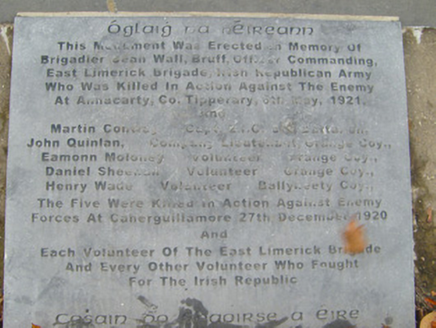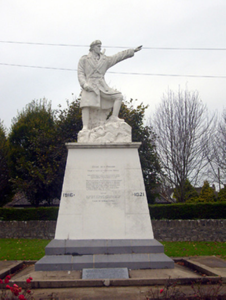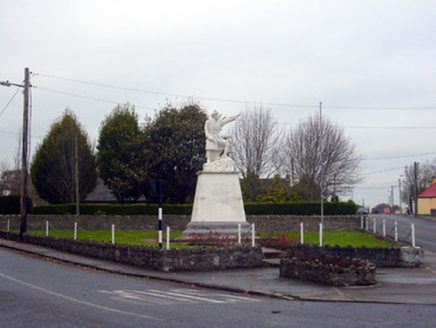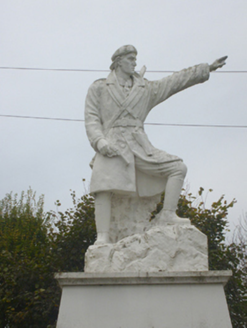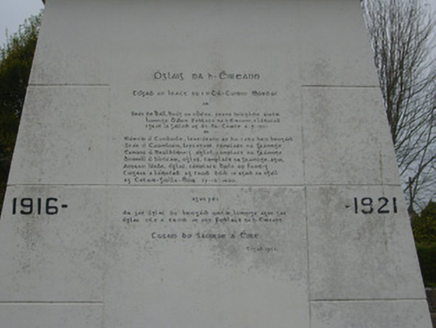Survey Data
Reg No
21803004
Rating
Regional
Categories of Special Interest
Artistic, Historical, Social
Original Use
Monument
In Use As
Monument
Date
1930 - 1955
Coordinates
162806, 136351
Date Recorded
15/11/2007
Date Updated
--/--/--
Description
Freestanding Portland stone monument, designed in 1931 and unveiled in 1952, comprising stepped limestone base with inscribed square-profile tapered plinth having figure of a Volunteer in a belted trench coat and gaiters, carrying a revolver and wearing a cap with a peak turned ot the back. He is standing on one leg resting on a rock and points purposefully northwards. Designed by the sculptor Albert Power (1881-1945), and carved in the early 1950s by Leo Broe. The inscription to plinth reads: 'Óglaigh na hEireann/This monument was erected in memory of Brigadier Sean Wall, Bruff, Officer Commanding, East Limerick Brigade, Irish Republican Army who was killed in action against the enemy at Annacarty, Co. Tipperary, 6th May 1921, and Martin Conway, Capt., 2.1.C. 3rd Battalion, John Quinlan, Company Lieutenant, Grange Coy., Eamonn Moloney, Volunteer Grange Coy., Daniel Sheehen, Volunteer, Grange Coy., Henry Wade, Volunteer, Ballyneety Coy., The five were killed in action against enemy forces at Caherguillamore 27th December 1920 and each volunteer of the East Limerick Brigade and every other volunteer who fought for the Irish Republic. Casain do Shaoirse a Eire.'
Appraisal
This statue commemorates the local men who died in the War of Independence. Many IRA brigades were split by the Civil War, and a was committee formed in 1944 from the East Limerick Brigade to erect this memorial. This particular committee was remarkable for being one of the first which contained men from both sides. The fine detailing of this monument, unveiled by Sean T. O'Kelly in 1952, is indicative of high quality craftsmanship. Its prominent location, and the fact that it is larger than life, makes it a focal point in Bruff. The heroism in the gesture of the statue suggests East European and Soviet Communist monuments which glorify the worker. It took over 25 years to collect the £2,500 that Albert Power estimated was needed in 1931.
